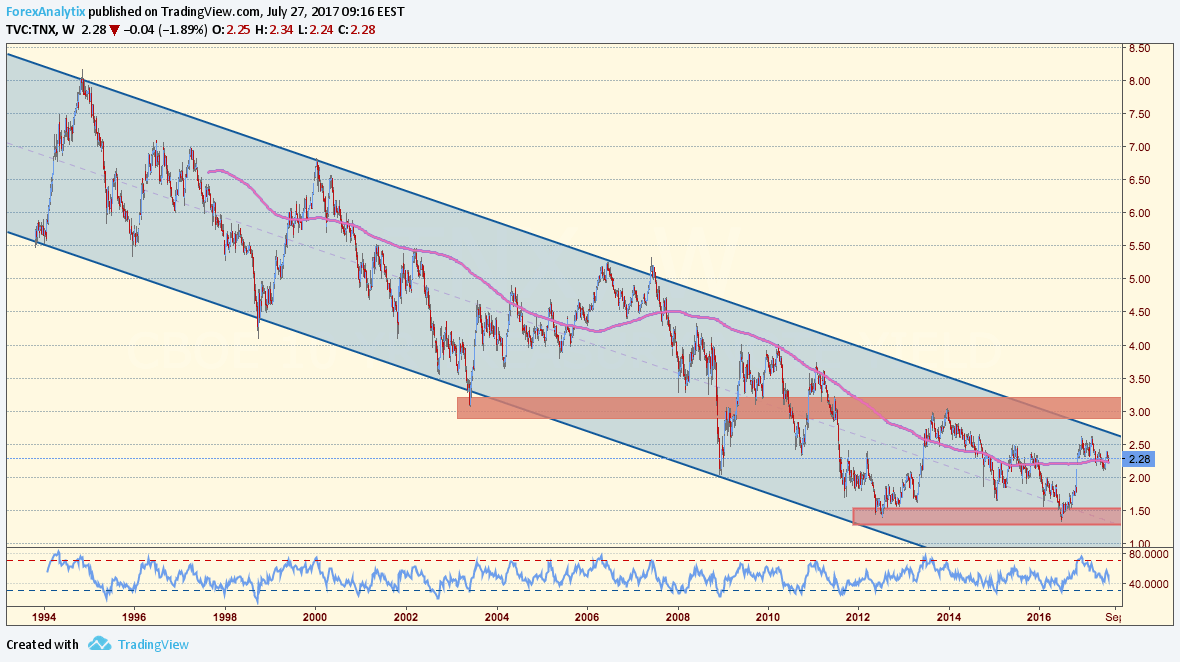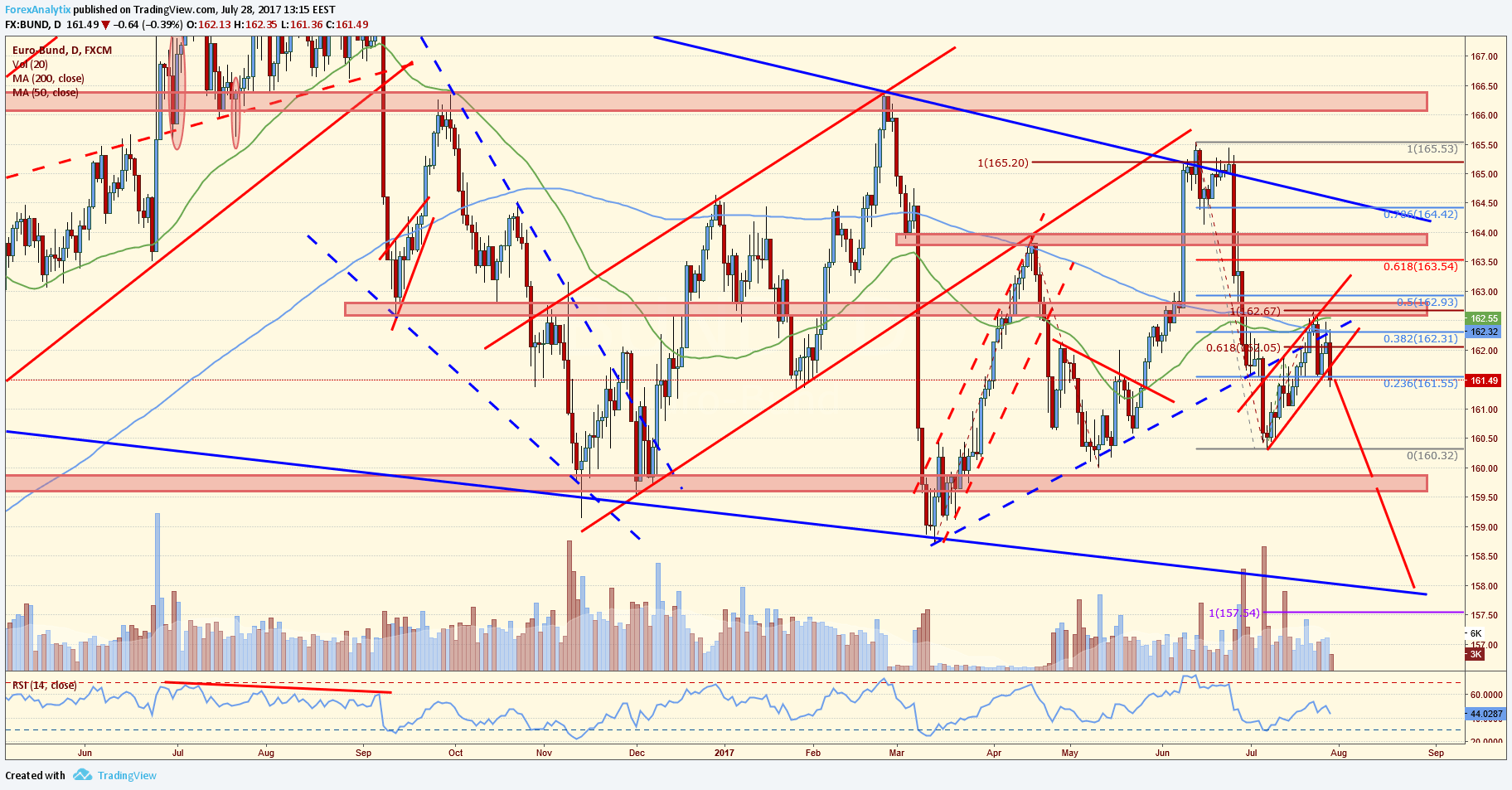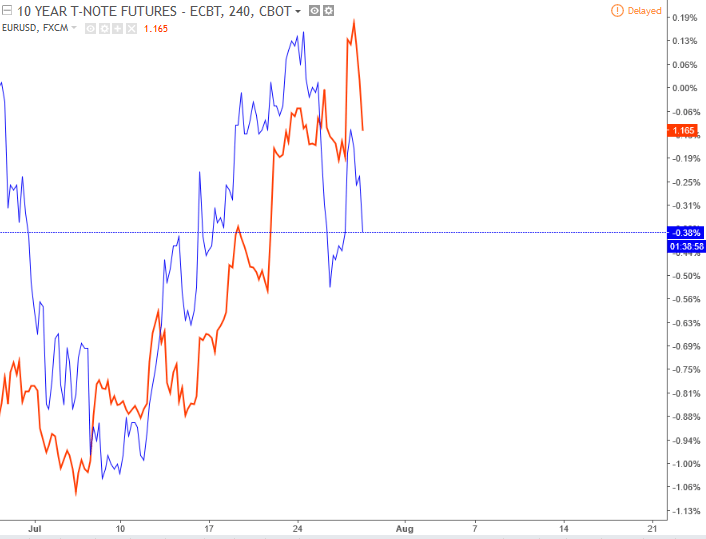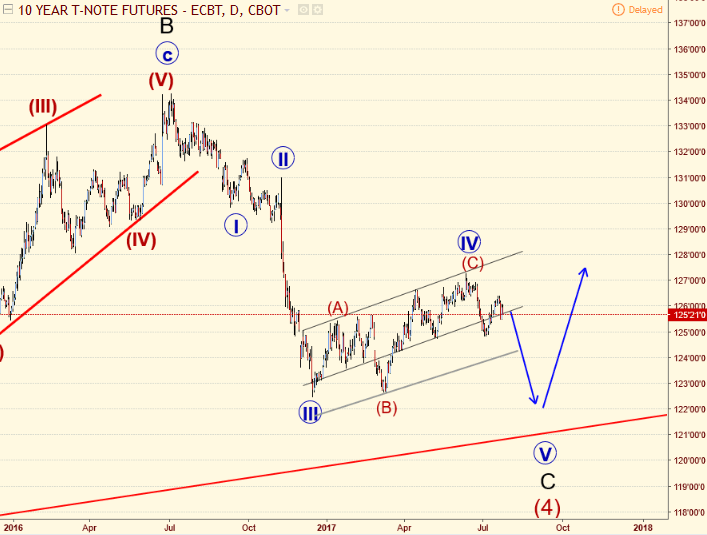A Macro Preview
Global bond markets have experienced a monstrous multi-year rally, mainly fuelled by unprecedented easing in central bank monetary policy. Most major central banks have engaged in Quantitative Easing and ZIRP/NIRP since the global financial crisis. As a result leverage and risk-taking were greatly encouraged, as the cost of funds became extremely cheap. This led to very high valuations for a wide range of risk assets, with many market participants characterising them as bubbles.

10 year US Treasuries in particular have been in a very well-defined downward channel which spans well over 20 years – 10yr yields have fallen in a near straight line from 8% to around 1.5% lows.
Where does this bond monster run end? How long can ultra loose monetary policy go on for? After nearly a decade of relentless easing, the first signs of its end are slowly emerging. It’s most likely that the world is heading back to higher yields although it’s unlikely we will see neutral yield levels like in the 80s, 90s and 00s. The new normal will probably mean around 2% base rates and 3-5% 10year bonds for majors – such a move should bring relief to markets and asset values.
The Fed, having been criticized for not hiking a couple of years back when economic data started to show promise, didn’t make the same mistake again in 2016. They commenced their hiking cycle in December 2016 and continued with more in 2017. However, they now face a tough dilemma as they are hiking into a weakening economy. Tightening monetary conditions will eventually affect the economy’s recovery path and this is already starting to show.
The good news for the Fed is that they’re not alone in their fight towards higher rates. The ECB have already strongly hinted about reducing their balance sheet and eventual rate hikes. The Bank of Canada already hiked once and could follow up soon. Even the Bank of England, amid all the Brexit-related uncertainty, are talking about reversing some of the ultra loose policy with 3 hiking votes in the last MPC meeting. In a fitting metaphor, central banks are like Tour de France cyclists: the Fed has spent a lot of time at the front of the peloton doing all the hard work while others streamlined behind them. Now it’s their turn to move back and let the others take over.
On a macro level, we think that the global yield landscape has changed. Bonds have been very rich for very long as risk premiums were practically eliminated. The recent bond sell-off was probably the precursor to a bigger move lower around the corner.
The Technical Analysis Perspective on the Bund

The Elliott Waves Perspective on the 10Y Note
10 year US notes are in a bullish mode since the start of the year but the recovery on the daily chart is clearly measured in three waves. In Elliott Wave theory that represents a corrective price action, labeled with A-B-C letters. It’s seen as a counter-trend move that can be fully retraced once it is completed. Based on the latest sell-off from June 13 2017 high, we think that more weakness is on the cards, at least towards the lower side of a corrective channel, down to 124’00. If the 10 year US note stays in bearish mode then we can expect an important bearish turn for the EURUSD as well, since we notice the positive relationship between the 10 year US note and the EURUSD since the start of July.


Any reviews, news, research, analysis, prices or other information contained on this website is provided as general market commentary, does not constitute investment advice and may undergo changes from time to time. Trading the Financial and Currency Markets on margin carries a high level of risk and may not be suitable for all investors. The high degree of leverage can work against you as well as to your favor. Before entering trading Financial and Currency Markets, you should carefully consider your investment objectives, level of experience and risk appetite. There is a possibility that you could sustain a loss of some or more of your initial investment and therefore you should not invest money which you cannot afford to lose. You should be aware of all the risks associated with Financial and Currency Markets trading, and in case you have any doubt, rather seek advice from an independent financial advisor. FOREXANALYTIX LLC, its owners, employees, agents or affiliates do not give investment advice, therefore FOREXANALYTIX LLC assumes no liability for any loss or damage, including without limitation to, any loss of profit, which may be suffered directly or indirectly from use of or reliance on such information. We strongly encourage consultation with a licensed representative or financial advisor regarding any particular investment or use of any investment strategy. As part of our service we provide “Patterns in Play” (abbreviated as “P.I.P.’s”). These PiPs are derived from certain clearly defined patterns that the team members identify from their analysis. Each PiP is indicated with its corresponding theoretical entry, target and invalidation levels. Please note that these are not trade recommendations; they are simply our team’s interpretation of these patterns and their theoretical levels. Any information or material contained on this website including, but not limited to, its design, layout, look, appearance and graphics is owned by or licensed to FOREXANALYTIX LLC. Reproduction is prohibited without FOREX ANALYTIX LLC prior license in writing.
Recommended Content
Editors’ Picks
EUR/USD edges lower toward 1.0700 post-US PCE

EUR/USD stays under modest bearish pressure but manages to hold above 1.0700 in the American session on Friday. The US Dollar (USD) gathers strength against its rivals after the stronger-than-forecast PCE inflation data, not allowing the pair to gain traction.
GBP/USD retreats to 1.2500 on renewed USD strength

GBP/USD lost its traction and turned negative on the day near 1.2500. Following the stronger-than-expected PCE inflation readings from the US, the USD stays resilient and makes it difficult for the pair to gather recovery momentum.
Gold struggles to hold above $2,350 following US inflation

Gold turned south and declined toward $2,340, erasing a large portion of its daily gains, as the USD benefited from PCE inflation data. The benchmark 10-year US yield, however, stays in negative territory and helps XAU/USD limit its losses.
Bitcoin Weekly Forecast: BTC’s next breakout could propel it to $80,000 Premium

Bitcoin’s recent price consolidation could be nearing its end as technical indicators and on-chain metrics suggest a potential upward breakout. However, this move would not be straightforward and could punish impatient investors.
Week ahead – Hawkish risk as Fed and NFP on tap, Eurozone data eyed too

Fed meets on Wednesday as US inflation stays elevated. Will Friday’s jobs report bring relief or more angst for the markets? Eurozone flash GDP and CPI numbers in focus for the Euro.